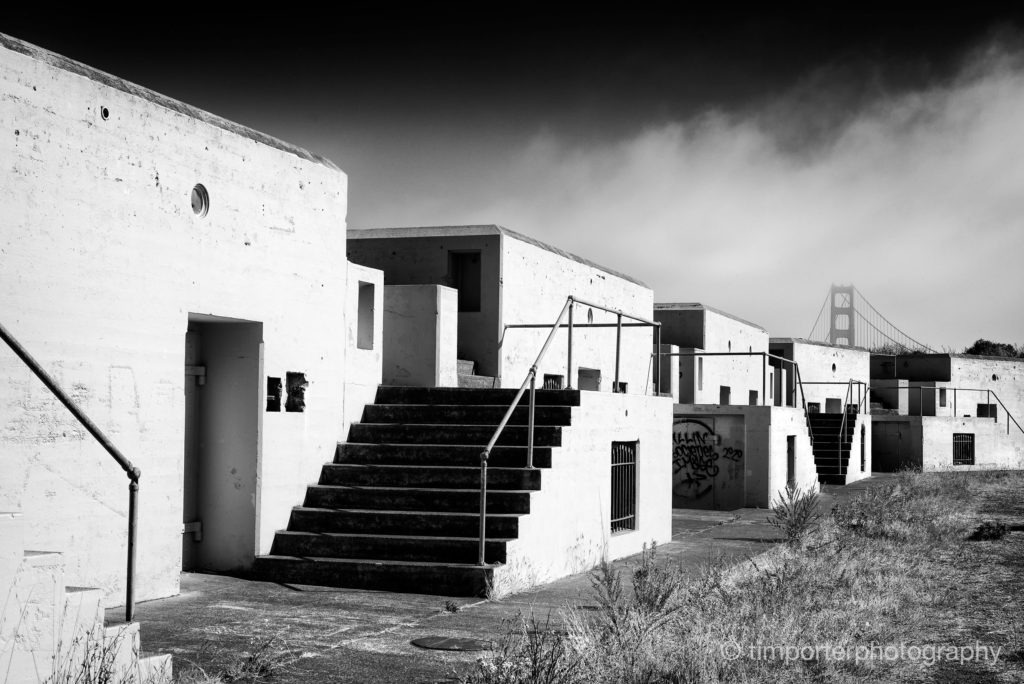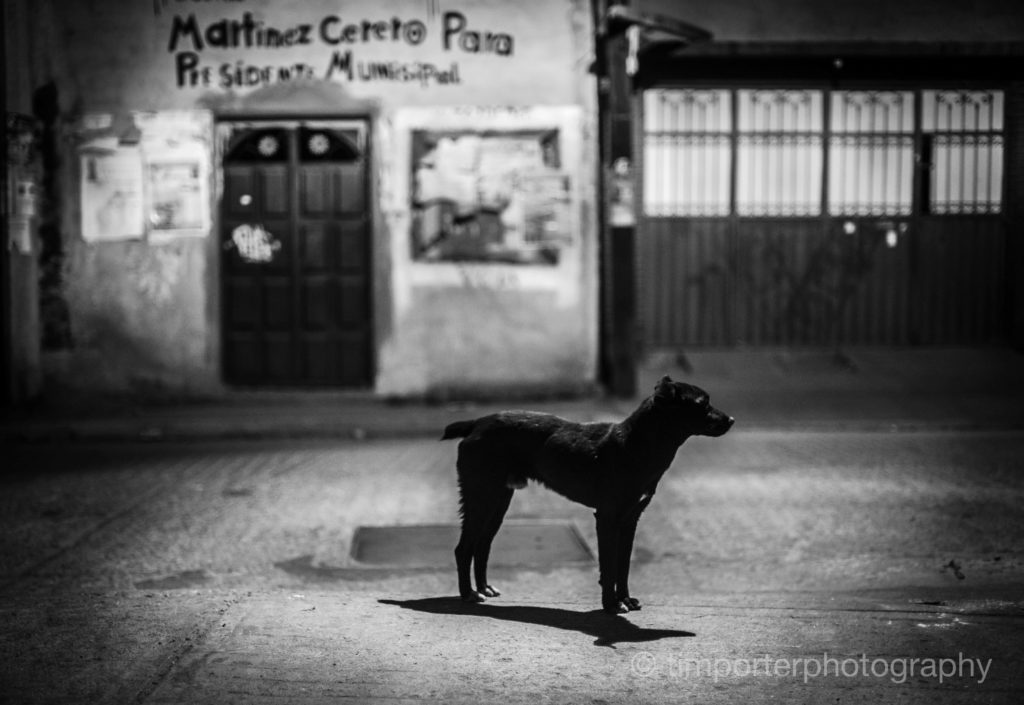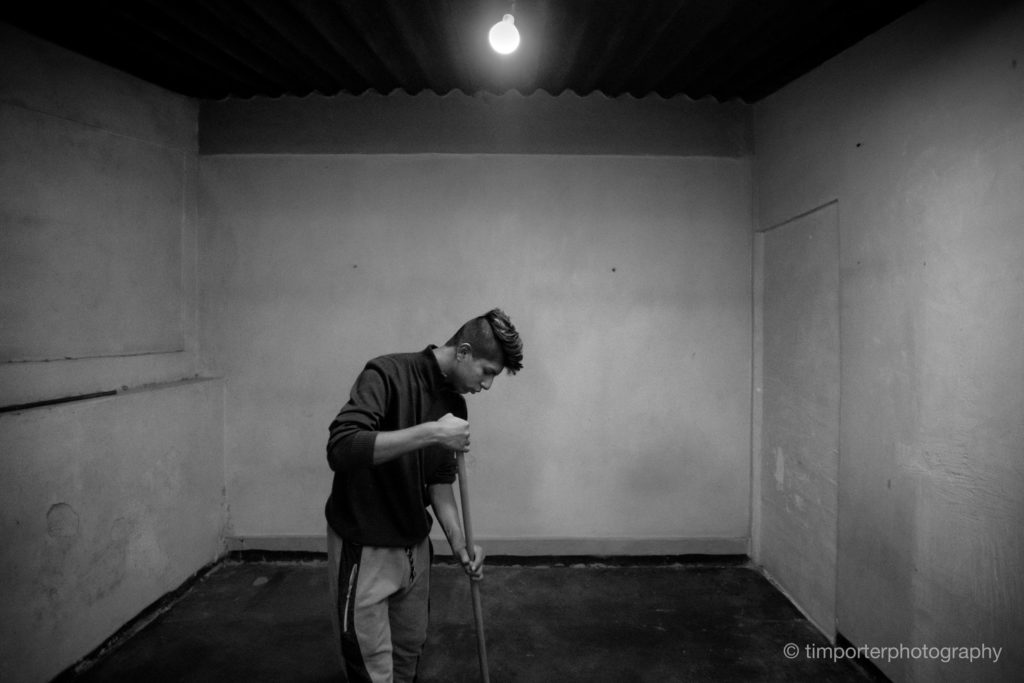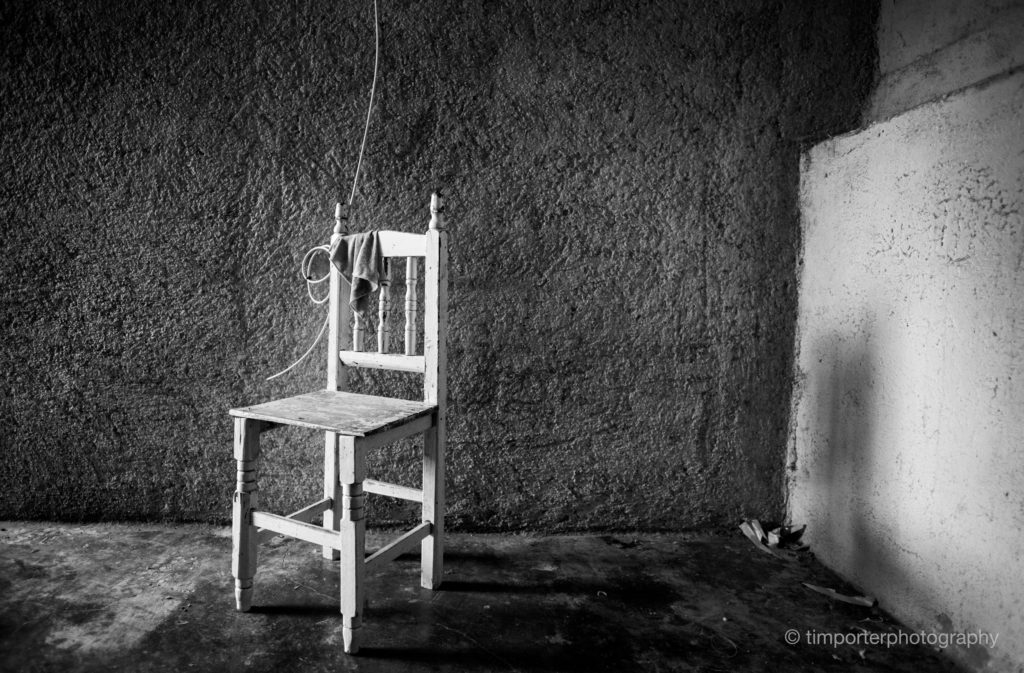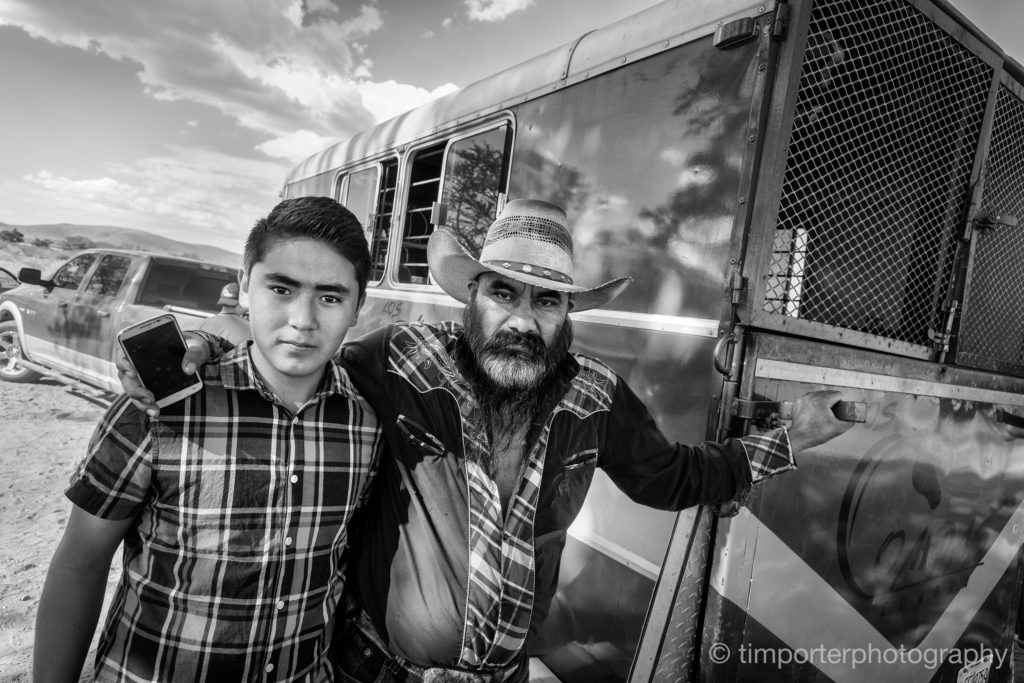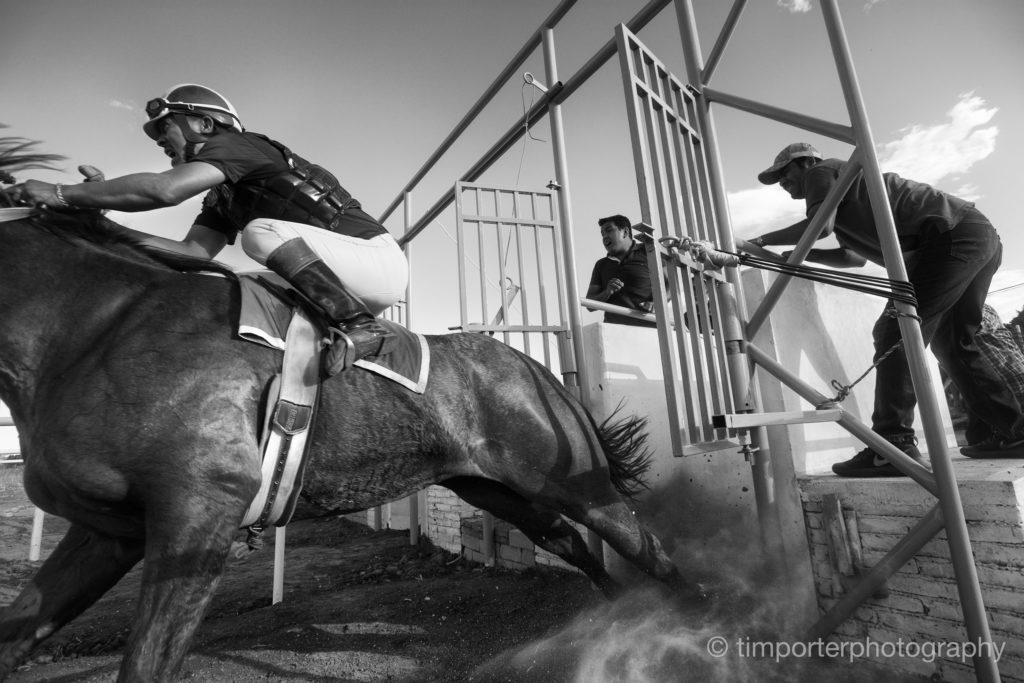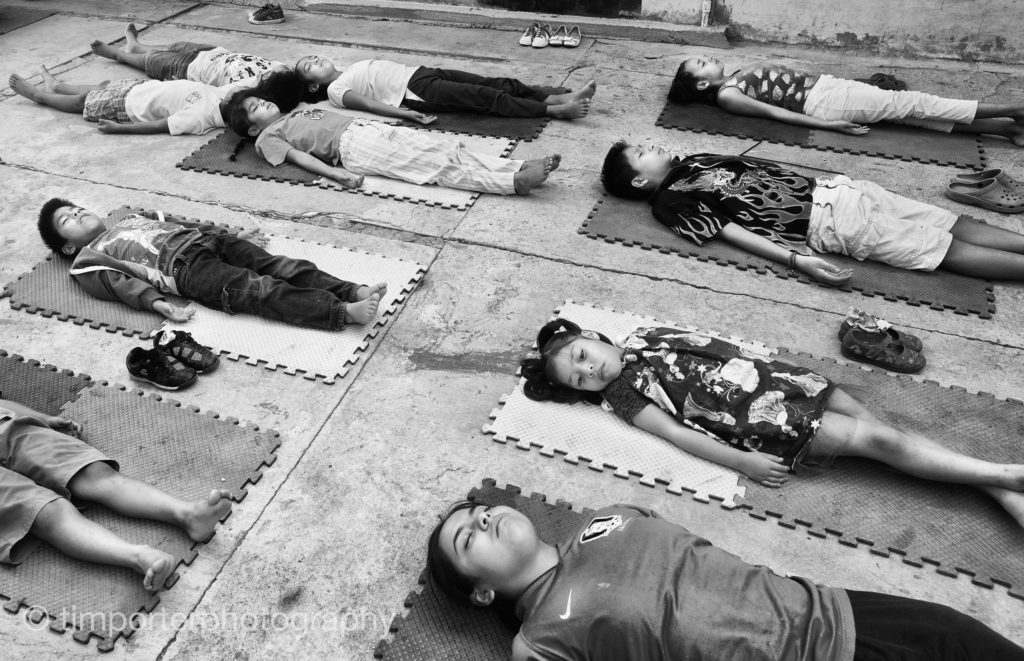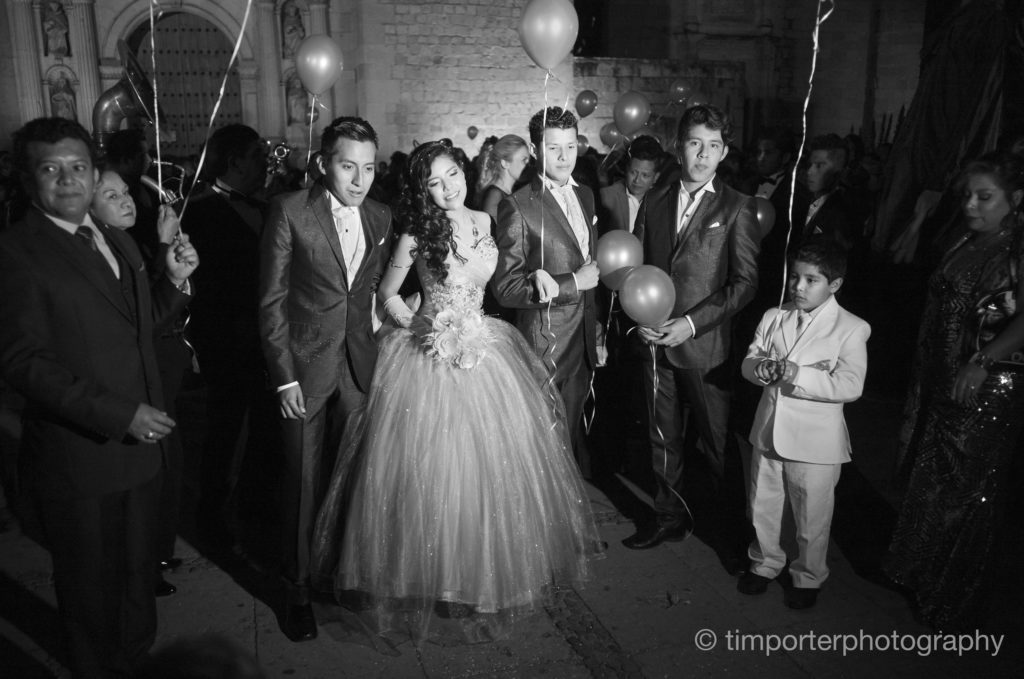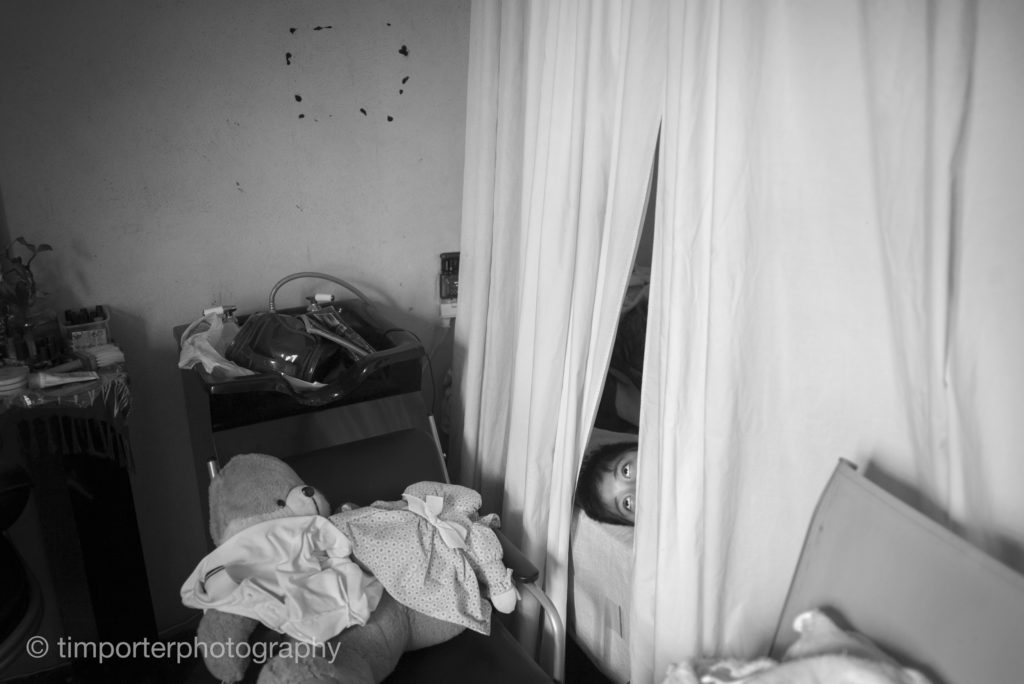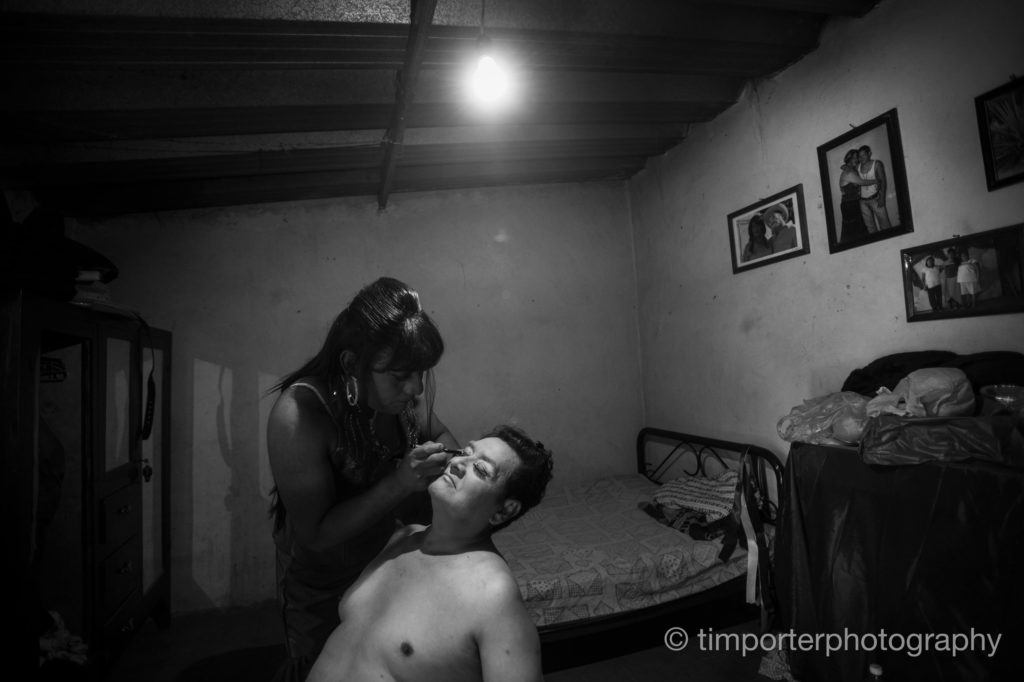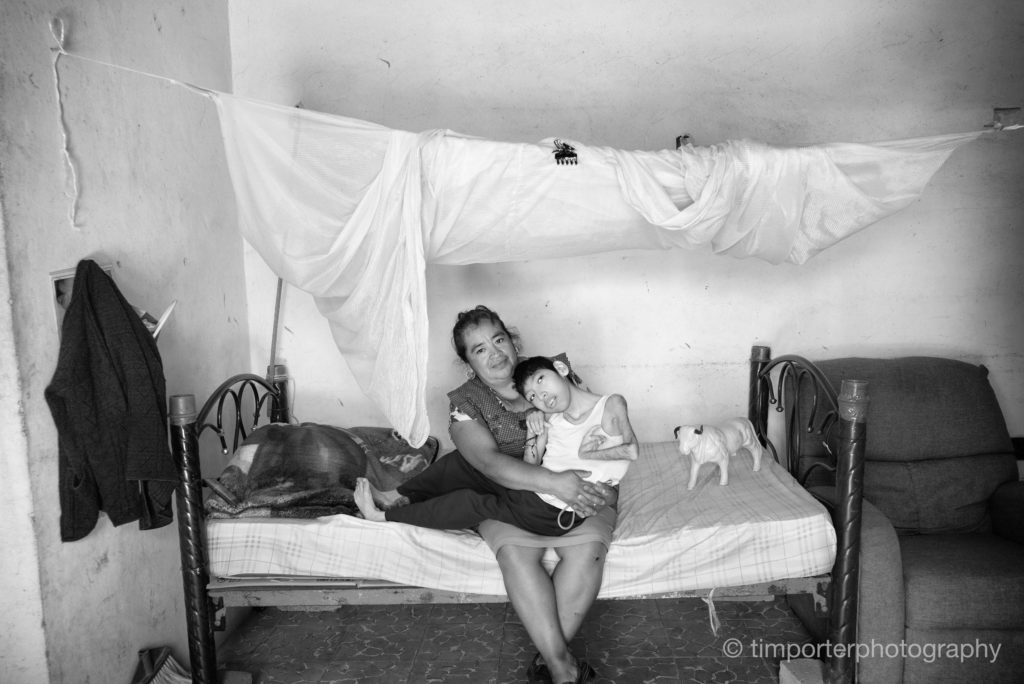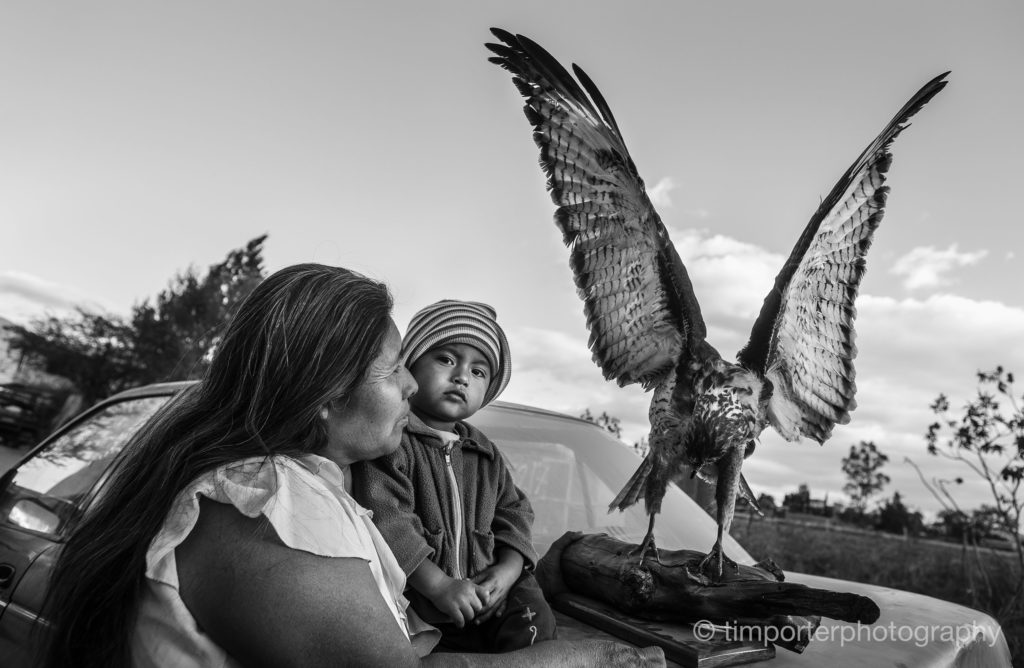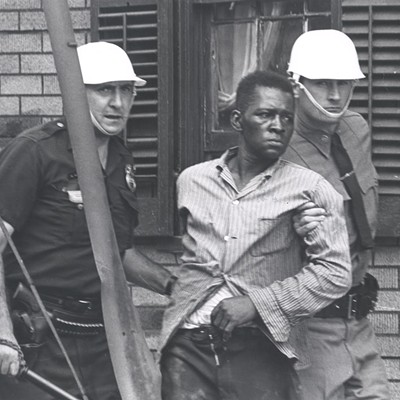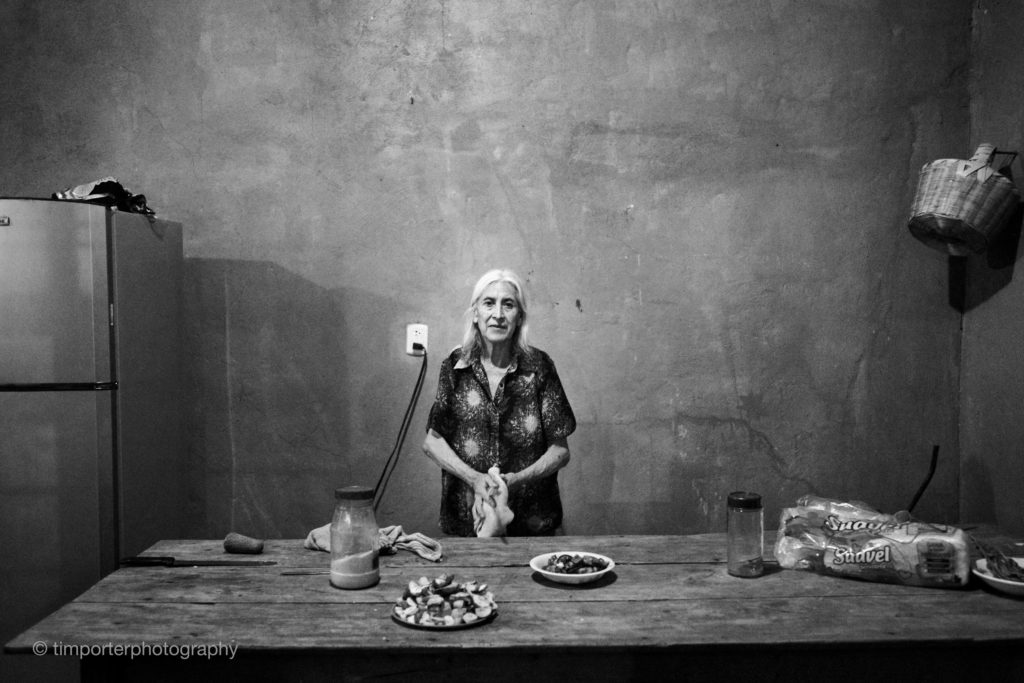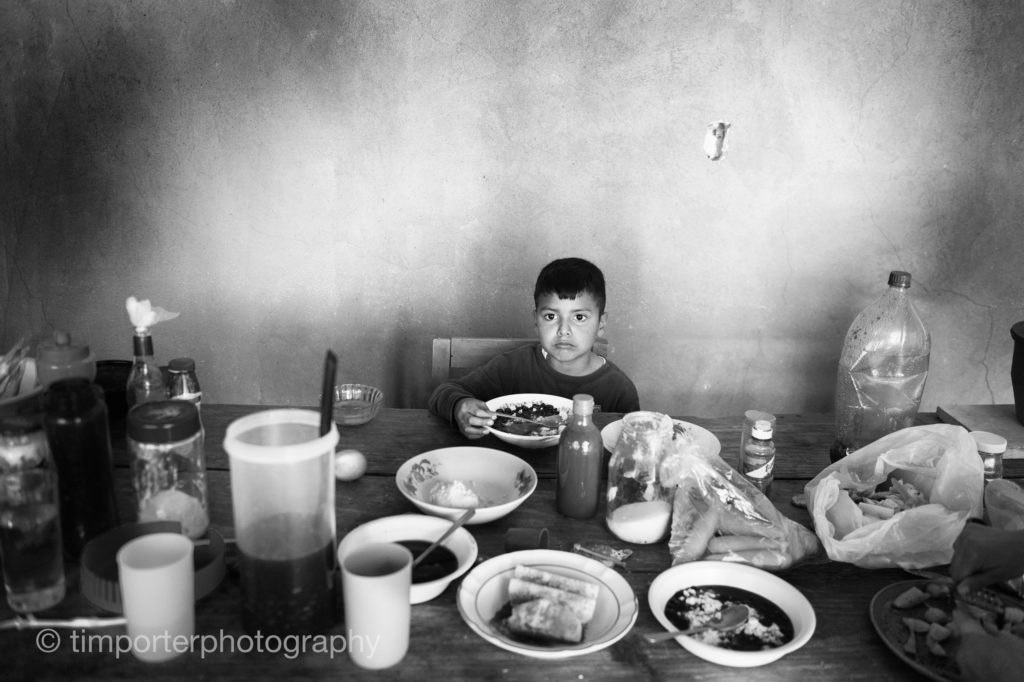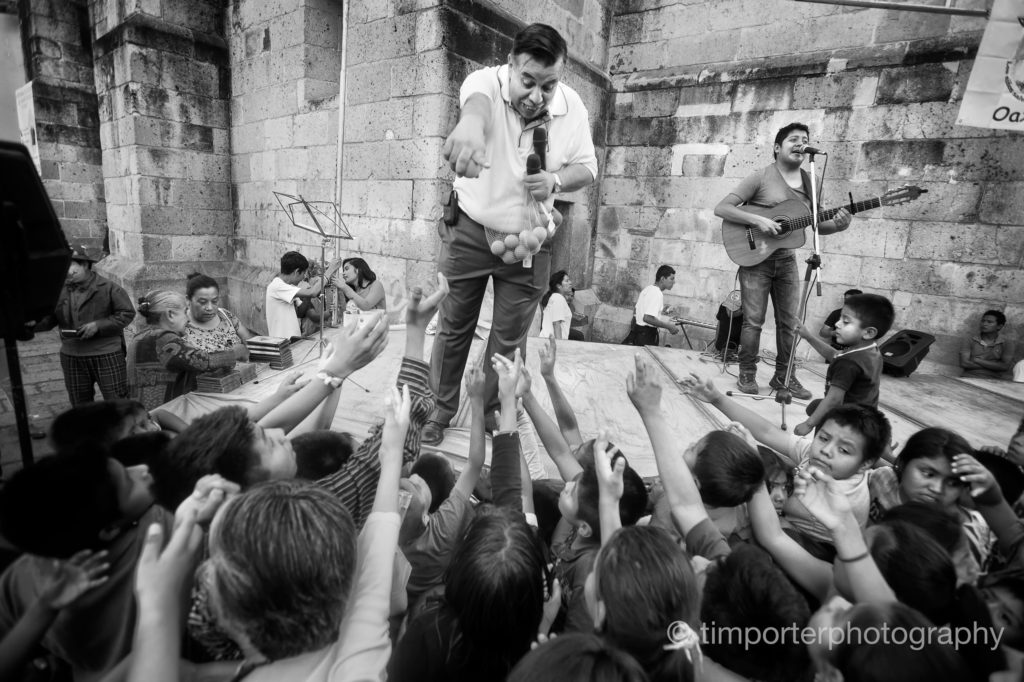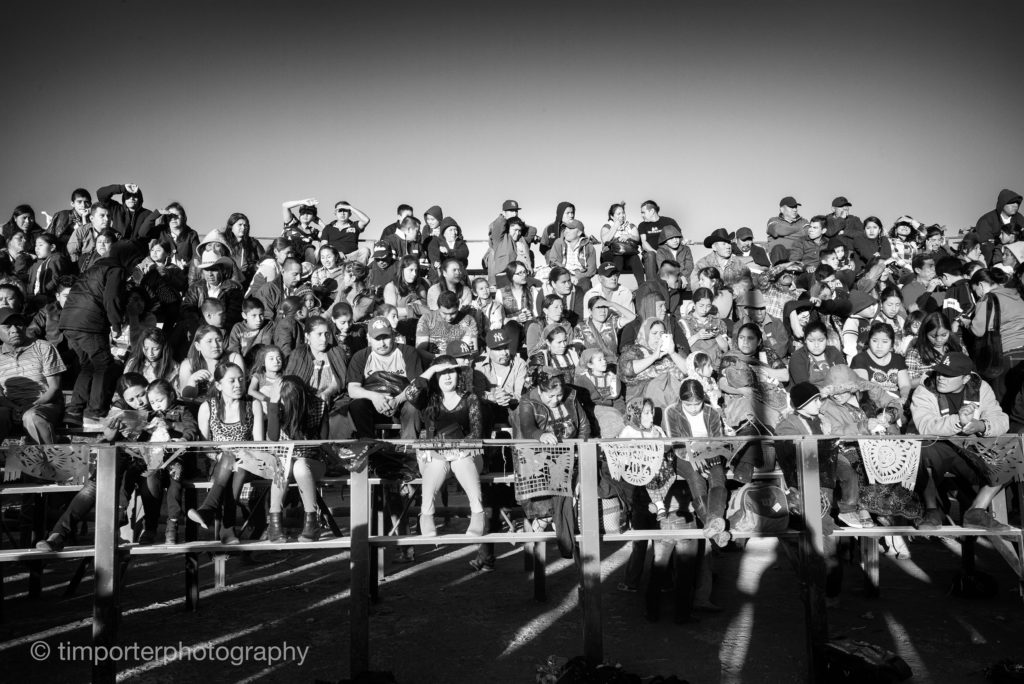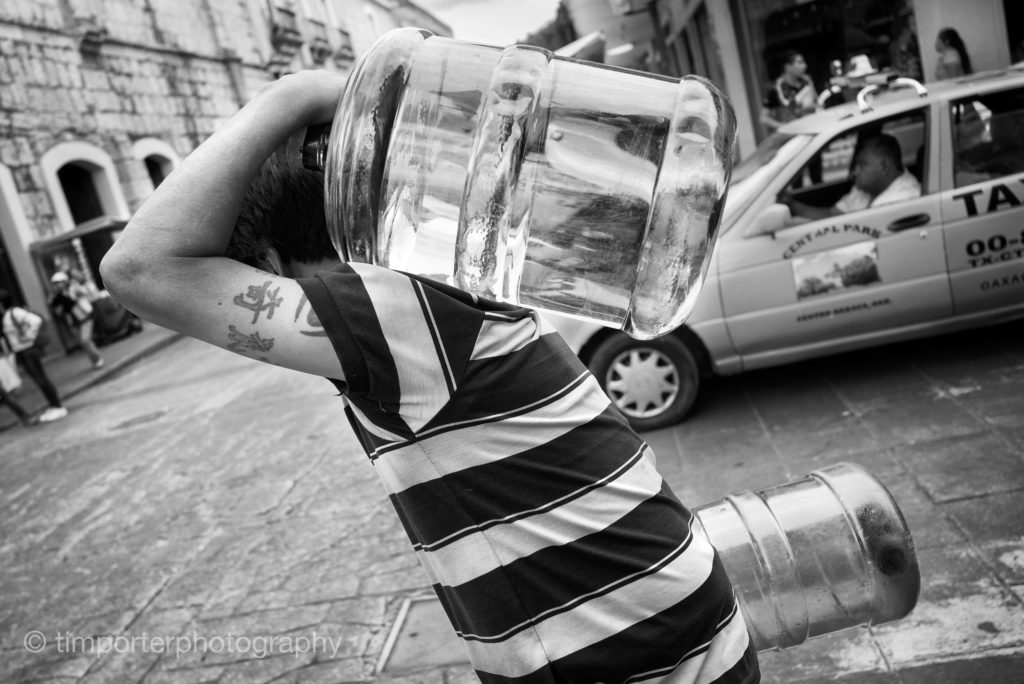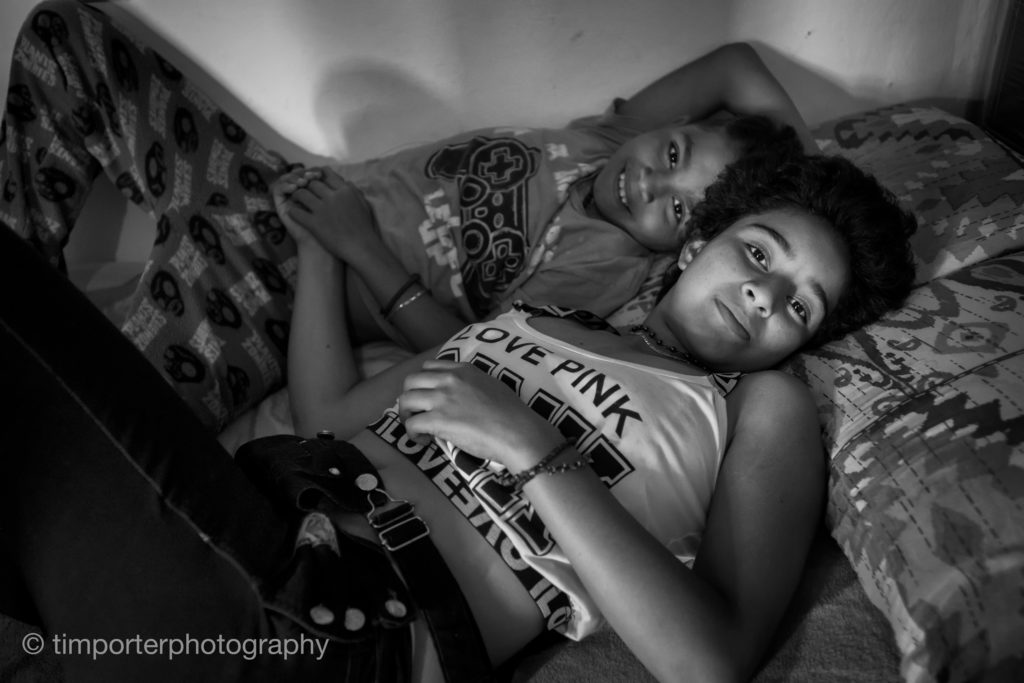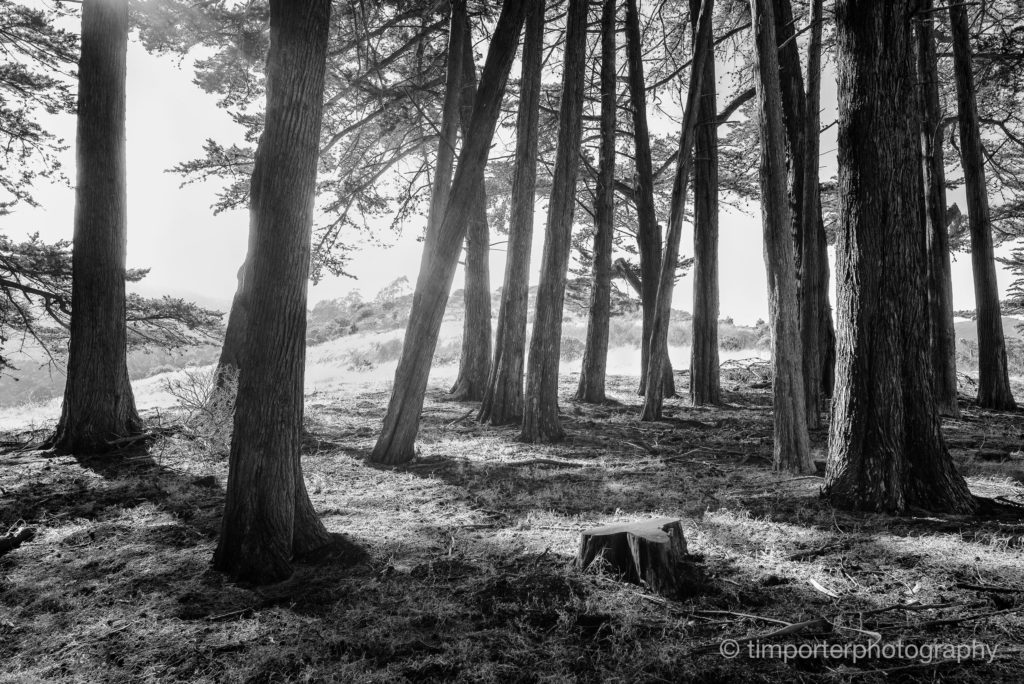
In order to give the knee a workout and to award myself a change of scenery, I drove to Fort Baker in Sausalito yesterday afternoon. The sun was low when I arrived but still high enough to surmount the western ridges of the coast. Its light spilled softly into the remains of a Monterey pine forest planted by the military garrison that once occupied these last slopes of land before the Golden Gate. I walked among the trees, carrying my little Leica and looking for formations of light and shadow. Now and then I knelt to take a picture and, when I did, a thick, spongy cushion of dried pine needles greeted my knees. I followed a deer path through the trees until the last of the pines yielded to a row of white, two-story buildings that were once the quarters of Army officers and today house well-heeled hotel patrons in $700-a-night suites.
The former parade ground of the garrison remains sown with grass. It is an expansive space that slopes lazily toward a cove of still water huddling in the lee of the Golden Gate Bridge, far enough away from the capricious currents and muscular tides of the strait for yachtsmen to store their vessels in a marina and for adventurous paddlers to launch themselves toward the Pacific aboard outrigged canoes that resemble bisected arachnids. For a day as nice as yesterday was, sunny and awash with a precocious onshore breeze, the great lawn was surprisingly empty. A group of masked tourists, perhaps guests in the hotel, posed with one another for selfies. A middle-aged man, rotund and bald, lay on his side, propped up on his left elbow, reading a book in the shade of a stand of short trees. A young couple, tall and strong of stride, walked with their dog. And me, an aging man, bearded and unkempt with a half-year’s hair growth splaying from the edges of his ballcap, limped toward the sea.
At the speed of a tortoise, but with the heart of a hare, I crossed the parking area next to the Discovery Museum, normally a destination of exploration and learning for children but now an empty shell wrapped in caution tape and studded with signs prohibiting access to its outdoor playgrounds, a reminder of how far from normal we are. Seeing the shuttered buildings deflated the already tremulous exhilaration I felt at striding freely, albeit tentatively, under the open sky after months of household hibernation.
With the knee’s permission, I summited a knoll that supports the hulking concrete of Battery Yates, a stout line of bunkers constructed by the U.S. Army in 1903 that was once equipped with cannons but is now a decommissioned relic. It is a favorite place of mine and over the years I have taken many pictures there, most of them terrible. Still, I like the symmetry of the emplacements and the brutishness of the concrete. I made a few frames yesterday, as I always do, one of them less terrible than the others.
By the time I returned to my car near the Coast Guard station on the edge of Horseshoe Cove, the knee was talking to me in unpleasant tones. It is such a crank. I pleaded for a few more steps and hobbled to the fishing pier that juts into San Francisco Bay across from the jetty. A half-dozen crabbers hung over the rusted railings, tossing their nets into the water and reeling them up, hoping to find a crustacean or two of legal size and species. An equal number of fishermen reclined in unfolded camp chairs with their rods propped against the railings waiting for signs of a strike by perch, jacksmelt or even a leopard shark.
The sun had dropped and, as the far end of the pier fell into shade, the wind became more intent on chilling those in its path. I first came to this place a half-century ago and stood on this very spot, having reached the end of the continent, the last terminal in a flight from all I had known – family, home, the city where I was born and where, en route to coming of age, I lost track of who I was. Unable to go farther, I stayed and here I still am, marveling at how little all of it seems to have changed, taking in the persistence of the bay and the bridge and the breezes, how they continue just as they were when I first saw them, and how their endurance masks the one thing in this scene that has changed irrevocably: me.
What always astounds me about this durable miracle of life is how easily it allows us to forget our own fragility.
